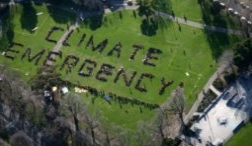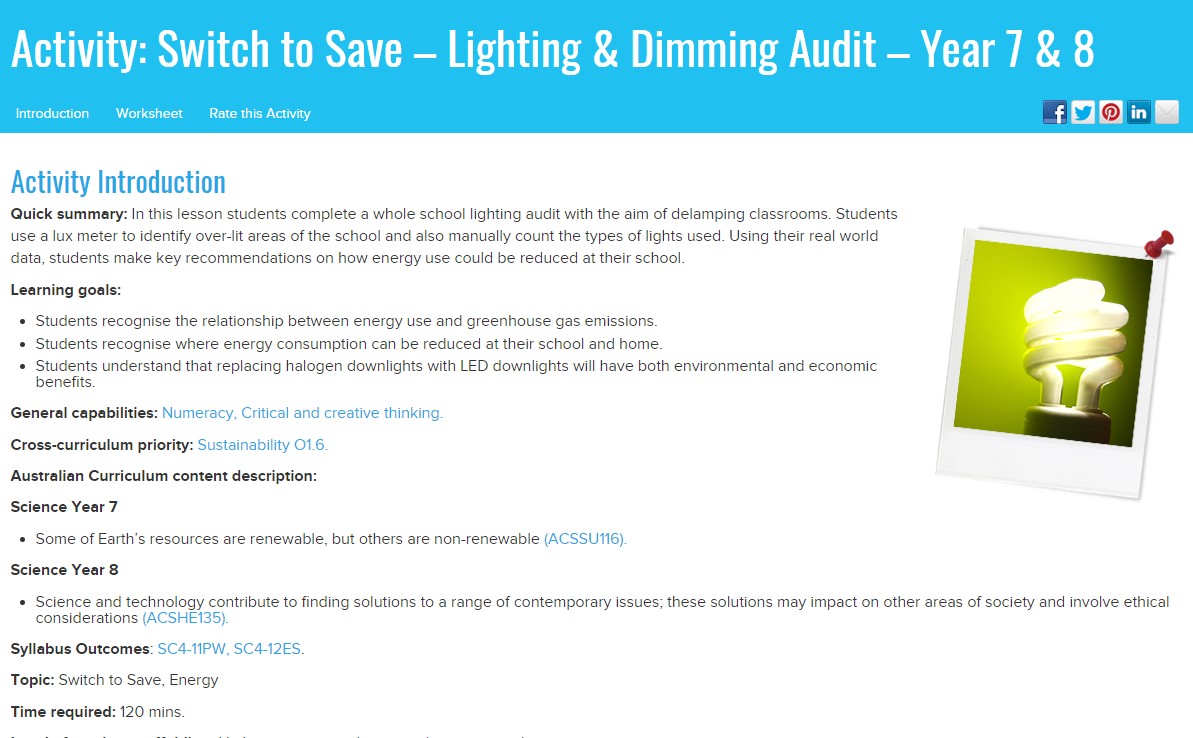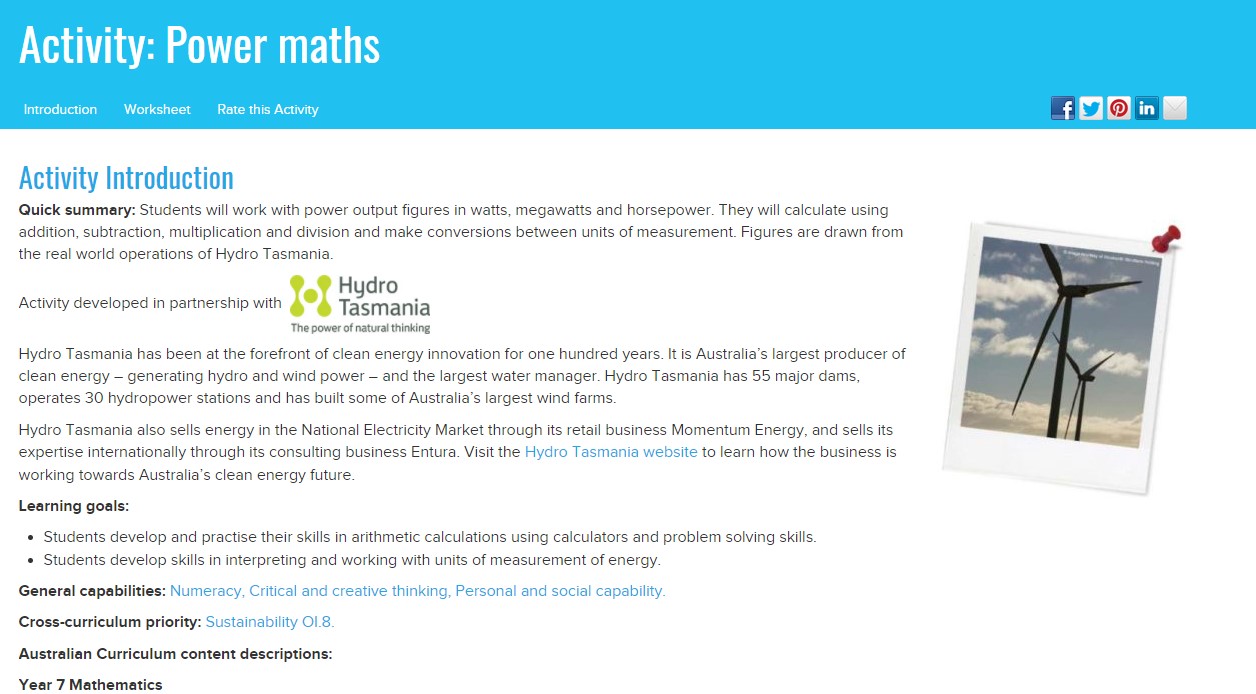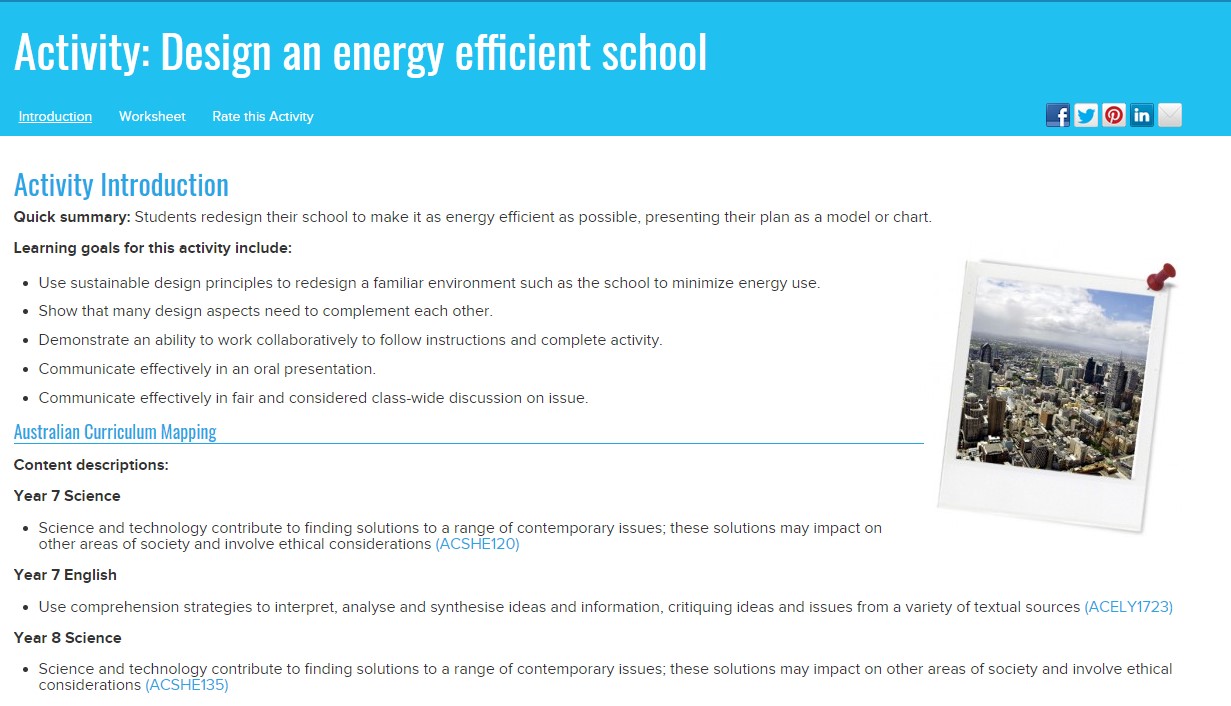
Units of work involving our environment enable your students to immediately apply their learning in the real world giving them greater motivation and opportunities to excel.
Curriculum materials are designed to meet a wide range of educational needs throughout Australia including:
1.Australian Curriculum
2.Other State Curricula
3.Latest innovations in learning and teaching practice eg Principles of Learning and Teaching (PoLT)
4.The e5 instructional model – engage, explore, explain, elaborate and evaluate
5.The curriculum component of AuSSI – the Australian Sustainable Schools Initiative
6.Education for a Sustainable Future, Australian Government
Teachers will find everything they need to teach a curriculum unit on energy for grades 7 and 8 in the teacher Curriculum section of the website. Student research materials can be found under Student Toolbox in the top menu bar along with self-directed activities and various tools.
Assessment background: Education systems have high expectations concerning assessment. Many schools will have very prescriptive assessment policies. Having assessment processes in place throughout a unit of work and involving students in their assessment, will assist teachers to meet these expectations. The current overarching understanding of assessment is:
- Assessment forlearning will help teachers respond to students’ learning needs during the unit of work.
• Assessment as learning occurs when students monitor their own progress and make learning choices.
• Assessment of learning occurs when teachers use evidence of what students have achieved. Teachers are often obliged to measure this against Learning Outcomes or Standards.
To assist teachers, activities have been identified to assist with assessment. Teachers will first need to decide what aspects of their curriculum they wish to assess. This will be determined by their State’s official curriculum policies and documents. This in time may be superseded by an Australian Curriculum.
Teachers who work with Cool Australia often use the following process to develop their assessment:
- Once the unit of work has been chosen, choose which learning outcomes, standards etc. that are going to be assessed. Often this is around five outcomes, standards etc for the entire unit..
2. Link the appropriate activities throughout this unit with the areas to be assessed.
3. Decide how are students being assessed during their learning
4. When students are developing learning goals, and then link the goals to the assessment.
5. Decide how individual student’s learning goals will be assessed
6. Modify activities where needed so they are a neat fit with your assessment needs.
7. As the unit develops, choose self-assessment tools with which students are familiar for self-assessments.
8. Inform students at the start of the unit about their assessment requirements.
Assessment ideas
A unit of work on an environmental topic will provide a range of tasks suitable for assessment. Identify the tasks that best assist with the learning outcomes/standards etc you wish to assess.
Tow list of assessment ideas have been develop as follows:
1. General – could apply to any unit of work on our environment using an inquiry approach
2. More specifically – identifies activities in this unit of work that has tasks suitable for assessment.
General
- Use a prior learning activity as a self assessment tool by asking students to review how their understandings and misconceptions have changed over the course of the unit.
• When doing activities such as cool question, students are able to choose and modify questions of interest to research and locate and extract relevant material to answer the questions.
• When students produce informative texts they can support their material with evidence diagrams and graphs.
• Students present their research information or findings in a variety of ways for specific audiences justifying their chosen media.
• They incorporate data and expand on mathematical concepts to explain environmental issues and solutions.
• Use the ‘Considering social action activities’ to demonstrate students can apply the things they have learnt.
More specifically
- Students use scientific concepts to explain how energy sources are converted to supply energy.
• They compare energy sources and technologies.
• They can critically explore future energy producing and conservation technologies identifying their relative usefulness and application.
• They are able to assess the usefulness of material found on the internet.
• In their work, they provide examples of how people’s behavior is linked to a sustainable future for all.


